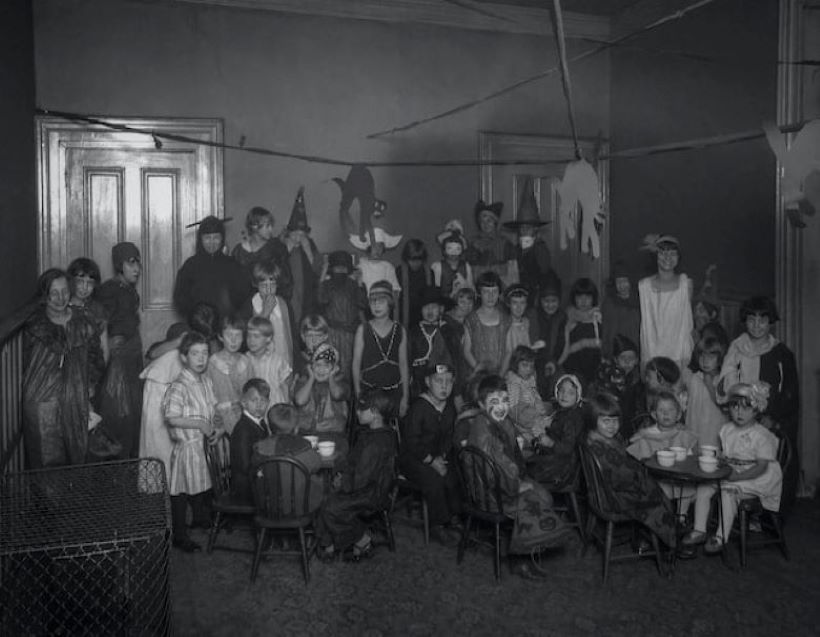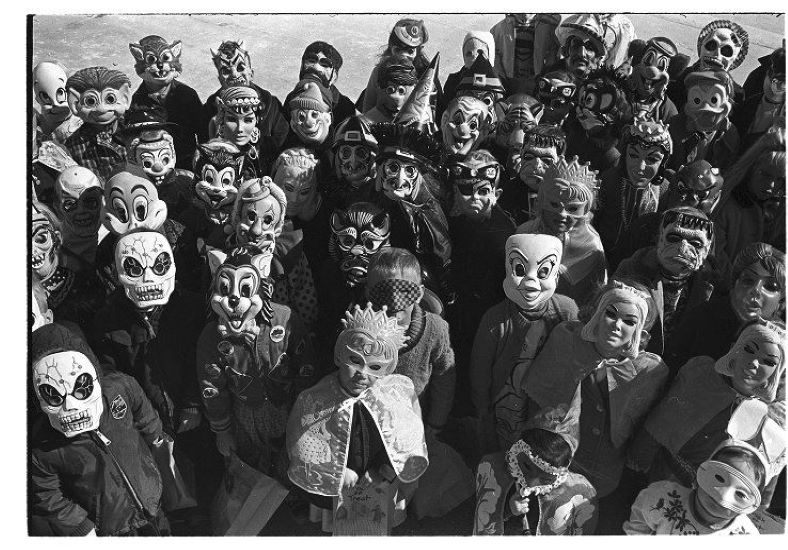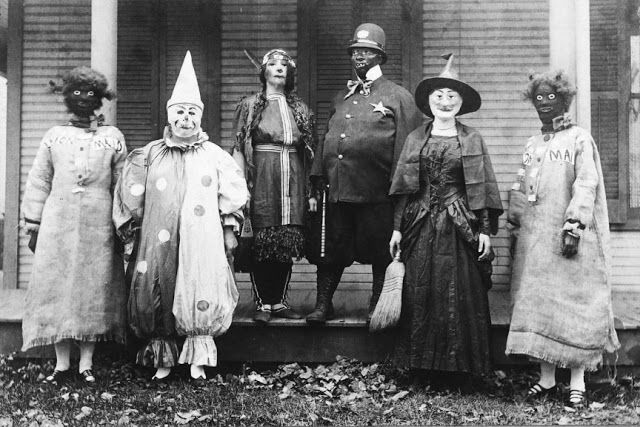The History of Halloween and Costume Wearing
Dressing up in capes, brandishing plastic swords and donning latex masks have long been the tradition of the Halloween festival across generations and cultures. Even though we grew up as children going door-to-door for treats, there is a lot more to the origins of Halloween.
Scotland, United Kingdom


It is believed the earliest mention of wearing a costume at Halloween dates back to 1585 in Scotland; however, the practice was most likely common place before then. The tradition of costumes originated with the ancient Celtic festival of Samhain when people would light bonfires and wear costumes to ward off ghosts. Wearing costumes on “All Hallows Eve,” (which later came to be known as “Halloween”), came from the belief that supernatural beings, or the souls of the dead, roamed the Earth on October 31st.
People would light huge fires and wear disguises/costumes to ward off ghosts and go house-to-house reciting verses or songs in exchange for offerings on behalf of supernatural entities. Impersonating these beings was also a means of protecting oneself from them.
In other parts of Western Europe, Halloween costumes developed from the custom of poor people going door-to-door collecting offerings as representatives of the dead or in return for saying prayers for them. As the centuries progressed, various Pagan and Christian rituals mixed and blended to form the basic celebration of the Halloween we know today.
North America


As the first wave of Irish and Scottish immigrants began arriving in the US in the 18th century, Halloween superstitions, traditions and costumes migrated with them.
In North America in the 19th century, Halloween was often celebrated with parades and mostly gothic or ghoulie homemade costumes worn primarily by children. By the 1930s, companies began mass-producing costumes for sale in stores as trick-or-treating became popular. By 1937 A. S. Fisbach, a New York company, held the license to Disney characters such as Donald Duck, Mickey and Minnie Mouse, and the Big Bad Wolf. So, it has been over 80 years of Disney owning American culture and entertainment.
The American tradition of Halloween did not really come about until the recognition of All Souls’ Day, which is a day of alms giving and prayers for the dead. The intent is for the living to assist those in purgatory. Many western churches annually observe All Souls’ Day on November 2, and many eastern churches celebrate it prior to Lent and the day before Pentecost. The festivities included poor citizens begging for food to which they would receive “soul cakes” from families if they promised to pray for the family’s dead relatives. This method replaced leaving out food and wine for the dead which soon became a practice where children took up going to homes of neighbors to be given either food or money.
History of Trick or Treating


In the mid-1800s, Irish immigrants came to the United States, bringing their Halloween traditions with them. This included dressing up in costumes, asking their neighbors for food and money, and pulling pranks in the evening on Halloween. Americans started doing the same thing, which eventually turned into what we now know as trick-or-treating. However, it wasn’t until recently that treats became more common than tricks.
For Example, In the 1920s, rowdy pranks had become expensive and costly, especially in major cities. Over time, cities and towns began organizing tame, family-oriented Halloween celebrations, which eventually helped reduce the number of reported pranks. Once candy companies began releasing special Halloween-themed candies, our modern idea of “trick-or-treating” was born.
Now here we are, dressed in costumes of our beloved movie, television and book heroes to request a trick or treat. Something that was once so dark has become a favorite seasonal pastime for the young and old.
Halloween Traditional Costumes
Halloween costumes from the first half of the 20th century were terrifying. Drawing on the holiday’s pagan and Christian roots — as a night to ward off evil spirits or reconcile with death, respectively — people often opted for more morbid, serious costumes than the pop culture-inspired ones of today, according to Lesley Bannatyne, an author who has written extensively about the history of Halloween.


Even though popular animated characters have been a basis for children’s costumes for most of the 20th and 21st centuries, the traditional monster getups like vampires, werewolves, zombies, ghosts, skeletons, witches, goblins, trolls, and devils are still prevalent across generations, genders, and cultures. In fact, these spooky costumes lend themselves to a multitude of variations from zombie-walking dead to Casper the friendly ghost, to the witch from Narnia, or Queen Poppy from Trolls.


For Trolls and Narnia, in more recent years, science fiction and fantasy-inspired characters, as well as superheroes and aliens, have begun to take the place of the historic supernatural beings and beasts from earlier costume traditions. There are also costumes that pay homage to pop culture figures, athletes, celebrities, and characters in film, television, and even literature. Dressing up as “Wizard of Oz” characters takes both from the film and literary buckets, as well as Broadway, if you are going as the Wicked Witch of the West.




Halloween is now a shared holiday for both children and adults, and while you can buy just about any costume in the store or online, there has always been a testament to the creativity of homemade costumes. Halloween allows individuals to express themselves as well as pay homage to their interest and push their craft skills. From sewing to paper cuts to makeup, Halloween offers a chance to come up with some homemade costumes. Last year on my street, a little boy was dressed as a toilet paper, and had a small pocket made on the side to put the candy. His mother made the whole thing from cardboard. Odd? For sure! Impressive? Definitely!


Of course, not everyone is skilled at costume-making or interested in purchasing a head-to-toe character. Even small artistic impressions like cat ears, face paints and wearing all black is a totally acceptable, low-maintenance costume. Also, there has been a rise in family costumes, whether worn to a party, trick-or-treating or just for photos to post on social media. Last year, my neighbors and their two daughters, all dressed as pandas. Another family down the block dressed up as The Incredibles, and I saw on TikTok matching monster family costumes including one for the dog too. So, while costumes originated as part of Celtic festivals to ward off or pay homage to the dead, hundreds of years later, they are now a means of expressing creativity, humor, and paying homage to favorite characters or historical figures. This year, I think we will be seeing a lot of folks dressed up as Elon Musk, Kim Kardashian, and Queen Elizabeth II. And we will also see a lot of kids dressed as grandparents, and maybe a few gender fluid, non-binary or pro-choice costumes.








One Comment